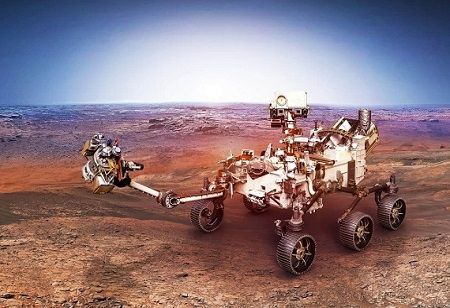
NASA Employs AI for Real-Time Rock Analysis on Mars with Perseverance Rover

 NASA officials have said that in a historic breakthrough, the Perseverance Mars Rover Mission of NASA used Artificial Intelligence to examine the compositions of rocks on the Red Planet all by itself. This is the first time that AI technology has been used on Mars where artificial intelligence makes decisions regarding rock composition results in real-time.
NASA officials have said that in a historic breakthrough, the Perseverance Mars Rover Mission of NASA used Artificial Intelligence to examine the compositions of rocks on the Red Planet all by itself. This is the first time that AI technology has been used on Mars where artificial intelligence makes decisions regarding rock composition results in real-time.
For nearly three years, the Perseverance Rover has been utilizing AI to scan Martian rocks and self-autonomously recognize minerals within them. The newest use of AI is by far an enormous step forward: it paves the way for how future spacecraft will handle priorities in data collection, searching for specific data to be used in analytical tasks, and bringing scientists closer to their goals regarding the study of Mars more comprehensively.
The Perseverance Rover uses the PIXL instrument in concert with AI to determine when to drill rock cores for eventual return to Earth. "Without it, PIXL really couldn't focus on those really important science targets", Abigail Allwood, principal investigator of the PIXL instrument at NASA's Jet Propulsion Laboratory in Southern California, said.
Both Perseverance and the Curiosity Rover, parked 2,300 miles away on Mars, run AI for autonomous operations. On Perseverance, AI is applied to navigation and adaptive sampling, while on Curiosity, it is applied to laser analysis of rock compositions. This AI integration makes it possible not only to reduce the scientists' workload but also enhance the mission efficiency for the implementation of scientific investigations faster.
AI makes PIXL's work feasible by means of an advanced hexapod mechanism using six robotic legs, which adjust the spectrometer in the arm of Perseverance to the chosen point on the target sample without touching it, precisely, regardless of various thermal conditions. PIXL's camera measures distances to rocks with micrometer-scale accuracy and makes adjustments to compensate for thermal expansion or contraction.
Some of the AI-driven capabilities of PIXL include scanning a rock surface with thousands of X-ray beams to detect chemical compositions, which helps in spotting minerals such as carbonates and phosphates, providing real information on Mars' past geology and habitability.
When PIXL detects the presence of certain minerals, it automatically performs extended data collection sessions 'long dwells' to obtain full datasets. As machine learning algorithms continue to evolve, so does PIXL's ability to prioritize scientific targets, broadening the scientific return of the rover on Mars.
The infusion of AI-driven autonomy is paramount for future deep space missions, particularly with respect to expeditions regarding astrobiology and enhancing our knowledge of extraterrestrial environments.